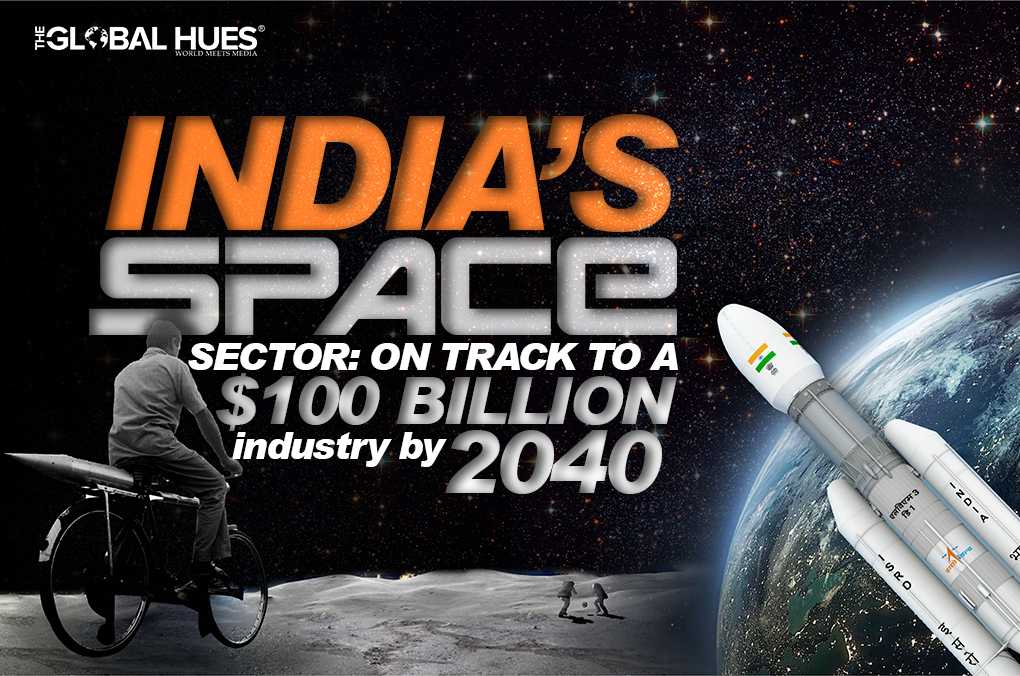A record of 166 completed missions, 381 satellites launched for 34 countries, a thriving ecosystem of 140 registered space startups, and a projection of a potential $100 billion space economy by 2040.
What do these statistics demonstrate? That, India is no less! The numbers underscore the fact that India, despite its status as a developing nation, has achieved extraordinary feats.
It all started during the 1920s when scientist S. K. Mitra learned about the sounding of the ionosphere using ground-based radio methods. Meghnad Saha and C.V. Raman later contributed to space research. The real breakthrough came in 1945. Vikram Sarabhai and Homi Bhabha primarily conducted space research. At that time Sarabhai had founded the Physical Research Laboratory at Ahmedabad in 1947. On the other hand, Homi Bhabha had established the Tata Institute of Fundamental Research in 1945.
In 1950, the Department of Atomic Energy was established to provide funding for space research. Finally, in 1962, Indian Prime Minister Jawaharlal Nehru asked physicist Vikram Sarabhai to lead the Indian National Committee for Space Research (INCOSPAR). There was no dedicated ministry at that time for the space program. According to R. Aravamudan, the first recruits in India’s space program were young and excited people like him. All the people were sent to the United States to be trained at NASA before they came back and started working at the rocket launch pad station at Thumba in Kerala.
“We were part of a seven-member team dispatched by Vikram Sarabhai, the father of India’s space program, to train with NASA and learn the art of assembling and launching small rockets for collecting scientific data,” once wrote R Aravamudan.
Vikram Sarabhai collaborated with NASA to develop India’s space program. Under the arrangement, NASA also supplied a rocket called Nike Apache to India. It weighed 715 kg and reached an altitude of 207 km with a 30-kg payload.
What next? It wasn’t easy to build a launch station for a rocket. Vikram Sarabhai chose Thumba as the launch station which is officially known as TERLS i.e. Thumba Equatorial Rocket Launching Station. It was taken to the launch site on a bullock cart; later rockets would take bicycles. On 21st November 1963, the rocket was launched.
In 1969, INCOSPAR rebranded as ISRO. One milestone after another, ISRO didn’t stop.
- On April 19, 1975, the first Indian satellite Aryabhata was launched.
- In the same year, the Satellite Instructional Television Experiment (SITE) was initiated to educate disadvantaged and remote populations in India through satellite broadcasting.
- On June 7, 1979, India successfully launched Bhaskara-I, its first low-earth orbit observation satellite. This satellite played a crucial role in collecting data related to oceanography, hydrology, and telemetry.
- On October 22, 2008, India achieved a significant milestone by launching Chandrayaan-1, its first unmanned lunar orbiter. This marked India’s inaugural lunar mission.
- On November 5, 2013, India successfully launched Mangalyaan, becoming the first nation to reach Mars orbit on its first attempt, and all this was accomplished with a budget of only Rs 450 crores. NASA spent over Rs 6000 crores on the American Maven orbiter.
- On February 15, 2017, India made history by launching 104 satellites into orbit using a single rocket, surpassing Russia’s previous record of launching 37 satellites in a single mission.
- On August 27, 2023, with the successful landing of Chandrayaan-3, India became the first country to land near Moon’s south pole.
ISRO Recently Made To The Headlines!
India’s Space program has developed leaps and bounds, with various accolades under its belt. The recent successful landing of Chandrayaan 3 on the lunar surface and the launch of India’s first solar mission- Aditya-L1 have made India shine in the global arena.
Principal Players Behind The Chandrayaan-3 Mission
-
S Somanath – ISRO Chairman
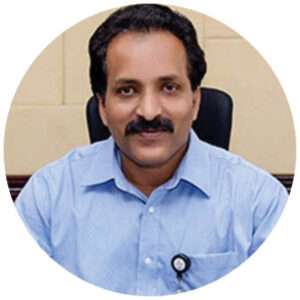
The brain behind the ambitious Chandrayaan-3 mission is ISRO chief, S Somanath. Somanath has also served as the Director of the Vikram Sarabhai Space Centre (VSSC) and the Liquid Propulsion Systems Centre (LPSC)- these are the primary centres for the development of rocket technologies for ISRO.
-
P Veeramuthuvel – Project Director
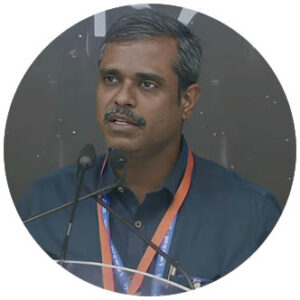
Palanivel Veeramuthuvel took charge of the mission in 2019. He is known for his technical skills and was the point person in negotiations with NASA. He is a native of Villupuram in Tamil Naidu and an alumnus of the Indian Institute of Technology in Madras (IIT-M).
-
Kalpana K – Deputy Project Director

Kalpana is an aerospace engineer by profession. She joined ISRO in 2003 and has worked on many satellite projects. For Chandrayaan – 3, Kalpana played a pivotal role in designing and optimising lander systems.
-
S Mohana Kumar – Project Director
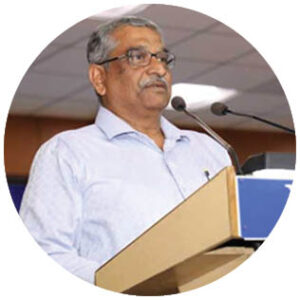
He is a senior scientist from the Vikram Sarabhai Space Centre. He was responsible for mission planning, execution, and management of the Chandrayaan -3 mission.
-
S Unnikrishnan Nair, Vikram Sarabhai Space Centre (VSSC)- Director
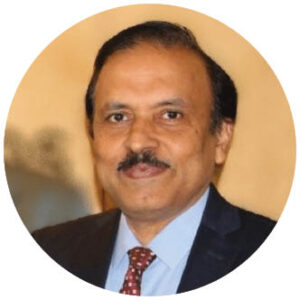
S Unnikrishnan is the Director of Vikram Sarabhai Centre, at Thumba. He has gained recognition for his contributions in the areas of launch vehicle design, the Space Capsule Recovery Experiment (SRE), & more.
-
M Sankaran, U R Rao Satellite Centre (URSC)- Director
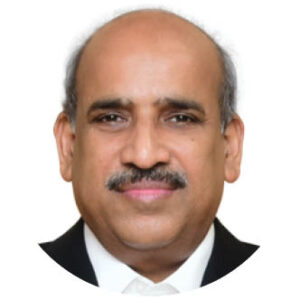
He is responsible for leading the satellite fraternity to meet the national requirements in areas like communication, navigation, remote sensing, and meteorology. In June 2021, he took over as the Director of the lead centre in India for the design and development of all satellites of ISRO.
Principal Players Behind Aditya L1 Mission
-
Nigar Shaji- Project Director

She is the project director behind the Aditya L-1 mission. Nigar Shaji joined ISRO after completing her graduation and masters in 1987. According to her, once Aditya L-1 is commissioned, it will be an asset to the country and the global scientific fraternity.
-
Sankarasubramanian- Principal Scientist

He is a senior solar scientist at the U R Rao Satellite Centre. His research areas of interest are the Solar Magnetic field, Optics, and Instrumentation. He also contributed to AstroSat, Chandrayaan-1 and Chandrayaan-2.

Ravi Singh Shekhawat
Scientist ‘D’ -ISRO
1. Can you discuss the prospects of establishing permanent human settlements on the Moon and ISRO’s contributions to such endeavours?
The missions taking place on the Moon are important for the human race so that humans can study more deep space and extremely distant planets, and this is possible only if we launch all the deep missions from a low-gravity planet outside the Earth. The gravitational force of the Moon is much less than that of Earth. As you know, it is not possible to refuel a rocket or any spacecraft during the journey and a lot of fuel has to be consumed to get the rocket out of the Earth’s orbit. Therefore, humans consider the Moon as the right place to conduct all deep space missions in the future, which will save time and fuel.
All the resources on Earth are limited. With the help of the research being done on the Moon, laboratories and deep space mission spacecraft tracking stations will be established on the Moon in the future, this is one such intention of humans, And all the countries are cooperating in multi-planetary missions for the mankind. In space missions, mankind is given more importance than any country tag.
There is no purpose to settle the common man on the Moon, which is not possible. Because asteroids continue to wreak havoc on the Moon and the temperature there is very low and very high, where humans cannot survive without protective suits.
2. How did the collaborative efforts of ISRO’s scientists and engineers contribute to the overall success of Chandrayaan 3?
In the Chandrayaan 3 mission, not only scientists and engineers but also employees at every level have contributed, three countries and many private companies have also cooperated. The most advanced technology of this era has been used in Chandryaan 3, and it is the result of many years of research that the Chandryaan 3 mission was successful. Chandrayaan 2 had been sending all the pictures of the Moon’s surface, which was a big achievement in understanding the Moon closely.
Parts of Chandrayaan 3 have been developed in different ISRO centres and private companies, so we can say that there has been collaboration of many teams, and Chandrayaan 3 is a result of everyone’s hard work, patience, experience and passion. All multi-planetary missions are carried out by all humans together.
3. What were the emotional moments and feelings among the team when Aditya L1 was launched?
Aditya L1 holds a special significance in itself. Launching a mission to study the Sun after Mars and the Moon is an exciting mission not only for scientists but for the entire human race. If seen from a scientific point of view, just launching a mission is not success, success is when the objective for which it was launched is accomplished. But yes, successfully doing back-to-back multi-planetary missions in a short period of time after Mars and Moon is a matter of excitement for all the scientists. By studying the sun, many sources of energy can be discovered for mankind.
All the youth should come forward in the space sector, there is a lot of opportunity in the space sector to make their future and do something for mankind. It is very important to spread awareness related to the space sector in India as much as possible.

Ayyagari Vinay Kumar
Scientist and Engineer at Human Space Flight Centre, ISRO
1. How is ISRO preparing for potential human missions to the Moon and Mars in the future?
ISRO is currently working on the Gaganyaan mission which is the maiden human mission for ISRO. The objective of this mission is to send humans into space, make them sustain there for 3 to 7 days and bring them back safely to the earth.
This is the point of inflexion for ISRO because this will open gates for future missions like sending humans to the Moon, Mars and probably to other celestial objects. The indigenously developed systems will be tested in the Gaganyaan mission which will also provide self-confidence for using the technology for future missions.
On the other hand, the recent soft landing of the Chandrayaan 3 lander on the moon’s surface made India self-reliant in soft landing technology. This is a game changer for Indian space technology because the same technology (with a few modifications) can be used for human landing on the Moon and Mars in the near future.
ISRO has started working on indigenous life support systems for astronauts. This is a very critical system for any human mission because it provides oxygen, removes carbon dioxide, removes heat, maintains humidity and also provides sustainable pressure on the human body through a space suit or through a pressurised cabin.
ISRO is also working on a Next Generation Launch Vehicle (NGLV) which provides us room for carrying heavier payloads, which is quite common for human missions.
The major part of avionics required for human missions is already with ISRO and is currently being used in several satellite missions. The delta change in avionics is crew health monitoring systems, avionics for life support systems and display systems. These systems are currently under development and will be tested in the Gaganyaan mission.
The ground station infrastructure for telecom and telemetry will be scaled up for human missions, for which ISRO is currently making MoUs with other countries to spare their networks during the mission.
Summing up, ISRO is preparing to send humans on to the Moon and Mars in an extensive way. Apart from centres of ISRO, other government organisations like DRDO, HAL, BEL etc. are closely working with ISRO for human missions.
2. How does India’s recent decision to sign the Artemis Accords impact its space strategy, and what opportunities for collaboration with NASA do you see arising from this move?
ISRO is continuously collaborating with other space agencies like NASA, ESA, JAXA and Roscosmos for several missions like NISAR, Gaganyaan, etc. The recent agreement on Artemis accords with NASA paves a path to establish peaceful and transparent practices for the usage of outer space.
Even though the major objective of the Artemis Accord is to safely carry out human landing missions on the moon with the help of all space agencies around the world, it comes with a future scope of space usage.
Dealing with NASA in Artemis accords provides ISRO greater visibility in the following areas:
- Formalising safe and reliable practices for human missions
- Establishing a robust process to carry out outer space mission operations
- Working for technologies which envisage removing space debris
- Working for better usage of outer space resources
- Contributing to humankind by providing scientific data with the existing instruments
Being a part of Artemis Accords, ISRO may also grab an opportunity to work with NASA’s future human missions. This can be clearly understood as ISRO is the only organisation meant for reliable, sustainable and cost-effective space agency in the world.
Combining the power of cost-effective techniques for the missions and the technology in terms of launch vehicles and space crafts available with ISRO, India will become one of the few space agencies which can rule outer space.
INDIAN SPACE MARKET WILL BE WORTH $40-100 BILLION SOON!
The Space Market of India, which currently stands at a value of $8 billion and is growing at a CAGR of 4% could reach $40-100 billion by 2040. The number is sure to be achieved because of its strategic growth trajectory and the support from the private and government sectors. The country recently signed the US-led Artemis Accords, a multilateral space initiative, which aims to return astronauts to the lunar surface.
Furthermore, the Indian space launch services sector is poised for expansion due to economical launch services, increasing demand for communication satellites and a rise in navigation satellites. ISRO has shown a keen interest in the small satellite market and is actively developing a compact rocket capable of transporting satellites weighing between 500 to 700 kg to Low Earth Orbit (LEO).
Entry of Private Players in the Space Market
The promising future of the space industry is attributed to the government’s step towards giving a green flag to private players. As the private players enter the market, it will enable the country to remain cost-competitive within the global space market. Moreover, it will also create more employment opportunities.
$62 Million in Funding for 2023
As per the insights from Tracxn, India currently positions itself as the seventh in international space tech funding for the year. It has secured an impressive $62 million in funding, a 60% surge if we compare it with the preceding year. This funding surge clearly points towards the burgeoning SpaceTech powerhouse.
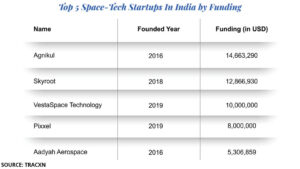
Incentives To Support The Startups And Space Industry
Every industry or business needs some incentives to grow and flourish, same is the case with the space industry. The GST council gave a surprising announcement two days after the launch of Chandrayaan- 3. What was the announcement? The private companies are exempted from giving any GST if they use their own launch vehicles and rockets to send satellites into space. It is indeed good news, and startups like Skyroot which launched its own privately built rocket in November 2022, said that it was a historic move.
The space sector’s budget has soared from 5,615 crore in 2013-14 to Rs 12,543 in ten years. Out of the total budget, Rs 9441 crore was allocated to achieve 84% readiness for the Gaganyaan- Indian Human Spaceflight Programme. Around Rs, 1559 crore was allocated for the space applications like developing payloads, and applications for earth observation, navigation, communication, and disaster management.
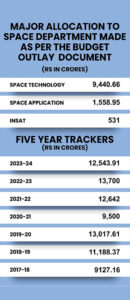
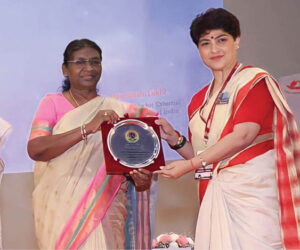
Captain Yashika Hatwal Tyagi
Kargil War Veteran, Ted X Speaker, Defense Analyst, Leadership Enabler, and Warrior Mindset Coach
1. What is ISRO’s role in India’s national defence strategy?
In the present-day world, Space is the integral domain to enhance military prowess & support military intelligence, surveillance, Reconnaissance, communication & navigation. ISRO in its journey of ‘Atmanirbhar Bharat’ is consistently alleviating the might of the Indian Armed Forces with satellites, GPS, Missile technology, and radars.
We have come a long way from 1999 when during Operation Vijay or Battle of Kargil as it is popularly called, India had requested and was denied effective and real-time satellite imagery and GPS assistance from the US and European countries. One more example is BrahMos test failure, on 20 January 2009 while testing the BrahMos missile, the US GPS was switched off at a crucial moment which crippled the system and the desired objective could not be reached. Many such incidents over a period of time led us to the firm belief in developing our Indigenous-independent and world-class space programme to a state-of-the-art level.
Ramakrishnan, former Director of Vikram Sarabhai Space Center, Thiruvananthapuram very aptly said, “Geo-Political needs to teach you that some countries can deny you the service in times of conflict. It’s also a way of arm twisting & a country should protect itself against that”.
In 2006, the Indian government gave a green signal to the project called NavIC. It is the operational name of the autonomous Indian Regional Navigation Satellite (IRNSS) developed by ISRO. Specialised services provided by NavIC multiply the Indian armed force’s strength. The Army, Navy and Airforce can rely on assured positional data during hostilities on land, sea or air. The indigenously produced navigation system supports guided missiles, bombs, and other defence systems like Brahmos, LCA, and LCH for proper targeting and maximum lethality. Who can forget the accurate Surgical strike in Pakistan?
We already have a Tri Services Aero Space Command in close working with ISRO and recently Navy and Air Force have dedicated satellites to cater to their niche requirements and very soon Indian Army will have one.
Rukmini GSAT is a dedicated communication satellite that helps the Indian Navy maintain OP preparedness on the high seas. ‘Angry Bird’ GSAT 7 A, has enhanced communication connectivity for Indian Air Force both in manned and Unmanned Aerial Vehicles. Similarly, GSAT 7B, a military-grade satellite shall be a game changer for the Indian Army. The future potential is immense with satellites like EMISAT which alleviate the signal intelligence to an enviable degree by intercepting signal broadcast through any communication system, radar or electronic system. The ka-band frequency allows it to scan through any and every terrain – ice, rain, coastal zones, landmasses, forests or waves.
These are just a few examples among many technological advances where ISRO and Indian Armed Forces are working in close cohesion to customise the knowledge to suit the niche requirement, for the common objective of securing India’s borders on ground, air and water.
ISRO To Now Focus on R&D
The Indian Space Policy 2023 which was made public on April 20, 2023, will enable ISRO to focus on research and development of advanced technologies. In this policy, the government talks about how it intends to focus on enhancing the role of Non-Governmental Entities (NGEs) and give them a level playing field. The policy wants to build a flourishing commercial presence in the Indian Space Industry. The major crux of the space policy is to promote greater private sector participation in the entire space economy value chain. The main focus areas of the policy are:
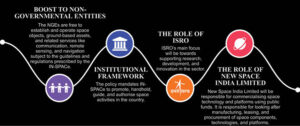
-
Boost to Non-Governmental Entities
The NGEs are free to establish and operate space objects, ground-based assets, and related services like communication, remote sensing, and navigation subject to the guidelines and regulations prescribed by the IN-SPACe.
-
Institutional Framework
The policy mandates IN-SPACe to promote, handhold, guide, and authorise space activities in the country.
-
The Role of ISRO
ISRO’s main focus will be towards supporting research, development, and innovation in the sector.
-
The Role of New Space India Limited
New Space India Limited will be responsible for commercialising space technology and platforms using public funds. It is responsible for looking after manufacturing, leasing, and procurement of space components, technologies, and platforms.
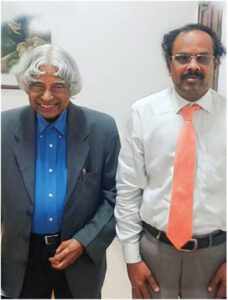
Elangovan Rajagopalan
Former ISRO Scientist & Ex Colleague of Dr. APJ Abdul Kalam
1. How have you witnessed ISRO’s growth and evolution from its early days to becoming a prominent player in the global space community?
ISRO’s growth, as I see it, is primarily attributed to its indigenization capability from the sounding rocket stage to the cryogenic stage. During the sounding rocket phase, the United States supported India’s first launch in 1963 with the “Nike Apache.” However, after two trials, the US denied crucial components, prompting India to develop its own composite technology.
A similar situation unfolded with Russia when, due to pressure from the US, Russia refused to transfer cryogenic technology to India. India persevered, ultimately developing its indigenous cryogenic engine.
For the Chandrayaan 3 mission, India initially planned for the USSR to design and deliver the lander. However, due to continuous delays in the USSR’s Lunar 25 program, India had to develop its own lander.
India is now collaborating with Japan on the Chandrayaan 4 (LUPEX) program, where India is responsible for developing the lander, further showcasing its growing presence in international space endeavours.
2. Are there any personal anecdotes or stories from your time at ISRO that you would like to share?
I used to occupy a seat on the opposite side of the room from Dr. APJ Kalam on the second floor of the Space Science and Technology Centre (SSTC). Our paths would often cross, and I would occasionally bump into him while walking around the floor.
One day, as I stood in front of the restroom mirror, combing my hair, the reflection revealed a surprising sight: Dr. Kalam’s face appeared behind me, and he asked his customary question, “What is happening?” To this day, every time I pick up my comb, I am reminded of his voice and the profound message he conveyed – that all of us must strive to make something remarkable happen, a legacy that ISRO continues to uphold.
3. You have closely worked with APJ Kalam Sir. What were some of the key contributions or leadership qualities of Dr. Kalam that influenced ISRO’s success in the field of space technology?
Dr. APJ Kalam possessed a unique leadership style that emphasized listening to everyone and empowering the team to make their own decisions. He encouraged open dialogue during meetings, even if it occasionally led to spirited debates. Remarkably, it’s known that he often came prepared to meetings with pre-written minutes.
Work is God The first letter in kalam stands for K-KATAMAI which translates to “duty” or “responsibility.”
During one instance, as his team was tirelessly working on a scheduled sounding rocket launch at TERLS, his boss was surprised to find Dr. Kalam and his colleagues, including Dr. Madhavan Nair and Dr. CR Satya, in a state of exhaustion – red-eyed, unshaven, and unchanged for days. His boss instructed him to go to his city residence, take a day’s rest, and return. However, Kalam brought his team back within two hours and resumed work
On another occasion, an elderly man arrived at TERLS in search of his son, who hadn’t written home or visited for a year. Upon further inquiry, it was discovered that the lost son was none other than Dr. Kalam himself. His boss insisted that he accompany his father to various places, but Kalam returned within four hours, dropping his father at Thampanoor (Trivandrum Bus Station) to continue working.
Dr. Kalam strongly believed in the concept of “Make in India” and prioritized indigenization. Whenever he visited foreign technology labs, he didn’t just marvel at their innovations but endeavoured to replicate them in India, following an Elon Musk-style approach of self-reliance. He once traced a component’s origin back to India, emphasizing the importance of knowing the roots of a product.
He was a proponent of “Technology best, but Humanity first.” His expertise in composite technology, from his time as the Project Director of SLV3 to his work on the fourth composite stage for weight-saving, extended to a heartwarming contribution to the medical field. By applying lightweight composite technology to artificial limbs for children, he significantly reduced their weight, bringing smiles and happiness to their faces. This, he noted, was one of the happiest moments of his life.
A Promising Future For India
According to current estimates, India’s share in the global space economy stands at a meagre 2 per cent, the government aims to make it 9 per cent by the decade’s end. One of the major factors that has helped India witness tremendous growth in the space sector is the entry of private players. More than 100 space startups are actively working in diverse areas like designing advanced satellites, building launch vehicles or rockets, working on space situational awareness (SSA) solutions and more.
Arthur D. Little’s report, India in Space: A USD 100 Billion Industry by 2040 highlights ten key imperatives that can enable India’s space sector to unlock its full potential. These include:
- Establishing clear and comprehensive regulations
- Attracting foreign investments,
- Strengthening manufacturing capabilities,
- Implementing formal support programs for startups,
- Capitalising on near-term opportunities,
- Setting up accelerator and incubation centres,
- Leveraging foreign expertise through collaborations,
- Collaborating on joint missions with other space agencies,
- Establishing dedicated research and development centres for emerging space themes, and
- Accelerating skill development.

